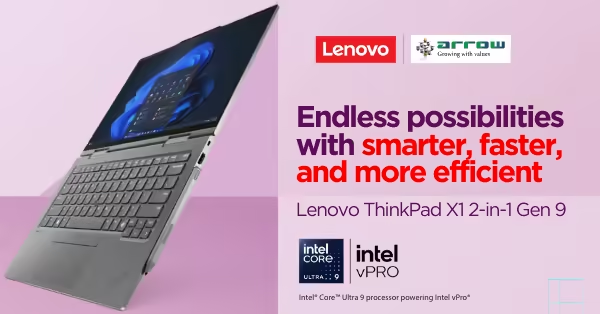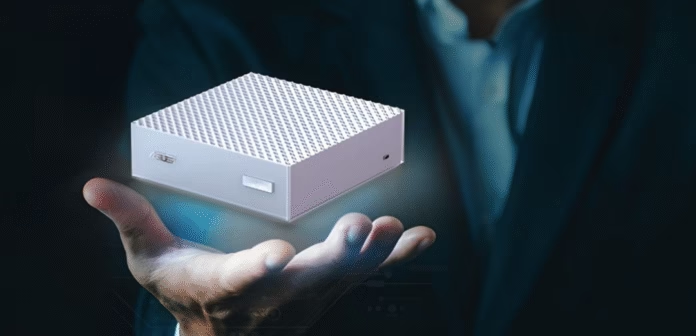There’s a shift happening in the tech business. It’s not loud, but it’s powerful—shrinking hardware, growing performance, and reshaping what we expect from desktop computing. And now, that shift has a name: Nvidia GB10, officially stepping into the desktop spotlight with Asus’ new Ascent GX10 mini-PC—a compact beast purpose-built for AI.
Arrow PC Network, known for delivering cutting-edge IT services and infrastructure solutions, is watching this launch closely. Why? Because the GX10 isn’t just another mini-PC. It’s a signal that the future of AI and edge computing is no longer confined to data centers or cloud stacks. It’s coming to desks, workstations, and even smaller enterprises that crave performance without compromise.
What’s Under the Hood? Grace + Blackwell = Game Changer
Nvidia’s GB10 Grace Blackwell platform is, simply put, a serious piece of engineering.
The system-in-package (SiP) brings together:
A Grace CPU with 10 high-performance Arm Cortex-X925 cores (up to 3.90GHz)
10 power-efficient Cortex-A725 cores
A Blackwell GPU pushing 1 PetaFLOP FP4 compute throughput—specifically optimized for AI
This is backed by a 256-bit memory interface and 128GB LPDDR5X unified memory, delivering a bandwidth of 273 GB/s—rivaling Apple’s M4 Pro. It’s no exaggeration to say this compact configuration offers data center-grade AI muscle, all within something that fits under your monitor.
Asus Ascend GX10: The Flagbearer of GB10
Set to be reintroduced on July 22, the Asus Ascent GX10 mini-PC isn’t just a showcase—it’s a statement. Asus is positioning it as more than a desktop—it’s an AI workstation and a frontline edge computing system, and rightly so.
An Nvidia keynote at the same event promises deep dives into the DGX Spark Software Stack, hinting at the serious software ecosystem behind this hardware. The fact that Nvidia is backing this with its own speaker shows the strategic weight behind the GX10 launch.
At Arrow PC Network, where we help businesses scale with smart hardware decisions, the potential of this platform is hard to ignore. For AI developers, startups, and enterprises working on generative AI, LLMs, or high-throughput inference tasks, this could be the hardware that balances power, size, and future readiness.
Pricing? Performance? The Devil’s in the Details
Let’s talk reality. While Asus hasn’t nailed down pricing, we expect the GX10 to hover around the $3,000 mark—similar to Nvidia’s own DGX Spark mini form-factor system.
That price might raise eyebrows, especially when leaked Geekbench scores suggest that the GB10’s general-purpose compute performance is on par with Qualcomm’s Snapdragon X Elite and Apple’s M3. So, does it fall short?
Not exactly.
Remember—this chip isn’t aimed at casual productivity or gaming. It’s designed for AI-first workloads. Its unified memory architecture, FP4 compute performance, and tight CPU-GPU integration make it a weapon for inference and machine learning workloads—not Cinebench bragging rights.
Not Just Asus—Others Are in the Game Too
While Asus is taking the lead, it won’t be alone for long. Dell, HP, Lenovo, and other big names are prepping their own GB10-powered compact systems. And Arrow PC Network is already evaluating deployment options for clients who need edge AI without relying on bulky servers.
As a long-time provider of IT services by Arrow PC Network, including premium hardware solutions from Lenovo, Nvidia, and other Tier-1 OEMs, we’re excited about the customization and deployment options this new generation of AI workstations opens up—especially for SMBs and fast-moving enterprises.
The Desktop AI Era Has Officially Begun
The GB10-powered Asus Ascent GX10 isn’t just another spec bump. It marks a pivotal shift—AI computing moving from cloud hyperscalers to the desktops and mini-PCs of everyday developers and businesses.
It’s sleek. It’s powerful. And it’s launching July 22.
If you’re thinking about building or upgrading AI infrastructure, Arrow PC Network’s IT services can help you plan, deploy, and scale intelligently—with the right mix of performance, efficiency, and future-proof technology.






